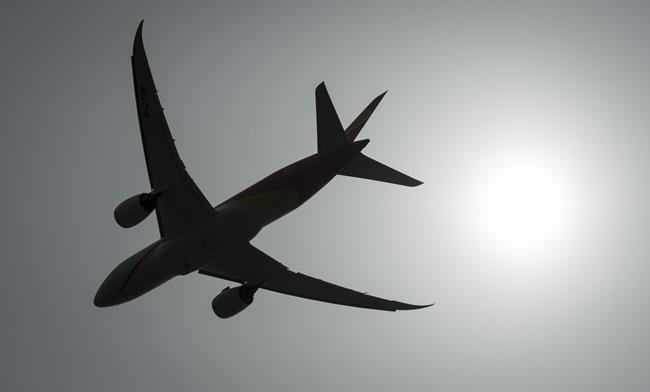With their promise of cheaper fares and no unnecessary frills, a flurry of so-called discount airlines has burst onto the Canadian scene in the last few years.
But experts say the low-cost airline model is exacerbating an already existing pilot shortage that could become an even bigger problem for this country's aviation industry in the years to come.
Start-up discount airlines — such as Edmonton-based Flair Airlines, Calgary-based Lynx, and WestJet subsidiary Swoop — have been rapidly expanding across Canada since the COVID-19 pandemic, gambling that there's enough pent-up demand from budget-conscious travellers to support additional capacity.
While each operates slightly differently, the basic premise of a low-cost airline is that travellers receive stripped-down service in exchange for low basic fares. Things like carry-on and checked bags, snacks and beverages, and cancellation protection are all considered extras and must be paid for separately.
The jury is still out on which, if any, of these upstart airlines will survive in a crowded field. However, experts say the rapid proliferation of new flights and routes is putting pressure on the aviation labour market — including for pilots.
"If I have a new airline that starts up with 10 airplanes, I theoretically need about 200 pilots," said Mike Doiron, president of Moncton, N.B.-based Doiron Aviation Consulting.
"And getting new pilots trained doesn't happen overnight, even though the demand for pilots has skyrocketed."
A pilot shortage has been brewing in Canada for years, based on a variety of factors including an aging workforce, pandemic-related layoffs and early retirements, and spiralling training costs. (Becoming a commercial pilot can now cost upwards of $100,000, discouraging some young people from entering the profession, experts say).
Last week, vacation airline Sunwing blamed its spate of holiday season flight disruptions and cancellations in part on a pilot shortage, telling the federal transport committee that the government's decision to deny the airline's recent application to hire 63 temporary foreign workers (TFW) for pilot roles impacted its ability to deliver service.
Tim Perry — president of the Canadian division of the Air Line Pilots Association, the union that represents pilots at a number of Canadian airlines, including WestJet and Transat (but not Sunwing) — said that argument is "absurd." He said he doesn't believe any Canadian airline that compensates its pilots appropriately should need to hire TFWs.
However, Perry said there are real labour challenges in the aviation industry. He said flight schools, northern and regional airlines in particular are struggling to recruit certified pilots, in part because new carriers are hiring pilots who otherwise would have gone to work at some of these smaller operators. And because discount carriers don't pay as well as Air Canada or WestJet, lower-cost airlines also struggle with retention.
"They are introducing a ton of capacity onto the market, at low cost, and it's added to the draw on pilots," Perry said.
"But those entry level jobs (at discount carriers) historically have not been career destinations. So those airlines end up with a higher training burden per unit of productive flying.”
None of the airlines contacted by The Canadian Press were willing to speak about the current state of the pilot labour market, nor was the National Airlines Council of Canada industry group.
But a 2018 report by the Canadian Council for Aviation and Aerospace said that a third of flight operators in this country at that time cited pilots as their biggest skills shortage. The report said the need for experienced pilots is beginning to outpace the available national supply, and projected the industry will need an additional 7,300 pilots by 2025.
“There’s only maybe 15,000 to 20,000 pilots in the entire system right now, so that’s a pretty significant number," Doiron said.
He added that some small airlines are already lowering their hiring standards — reducing the amount of flying hours they would normally require a pilot to have, or considering applicants who don't have university degrees — in order to be competitive in the labour market.
While pilots will always have to meet the minimum training requirements set by Transport Canada, Doiron said, a worsening pilot shortage in future will mean less experience in the cockpit. In addition, he said, it could lead to a long-term increase in the number of flight disruptions and cancellations travellers experience as airlines struggle with scheduling and labour.
"The shortage of qualified, experienced personnel is really going to put the whole industry upside down for the next little while," Doiron said.
"I’m glad I’m not running an airline right now, because it’s going to be a tough five to 10 years, I would suggest.”
Among the startup airlines that have added capacity since the COVID-19 pandemic are Flair Airlines, which has expanded aggressively to serve more than 30 destinations in Canada, the U.S. and Mexico; Lynx, which says it will be offering 5,292 seats per week to and from the United States from its Toronto and Calgary hubs as of February; and Canada Jetlines, which launched in September with twice weekly flights between Toronto and Calgary.
Toronto-based Porter Airlines is also launching new routes, and says it has up to 100 new aircraft on order which will give it the ability to operate across Canada, the U.S., Mexico, and the Caribbean.
This report by The Canadian Press was first published Jan. 19, 2023.
Companies in this story: (TSX:TKTK)
Amanda Stephenson, The Canadian Press



